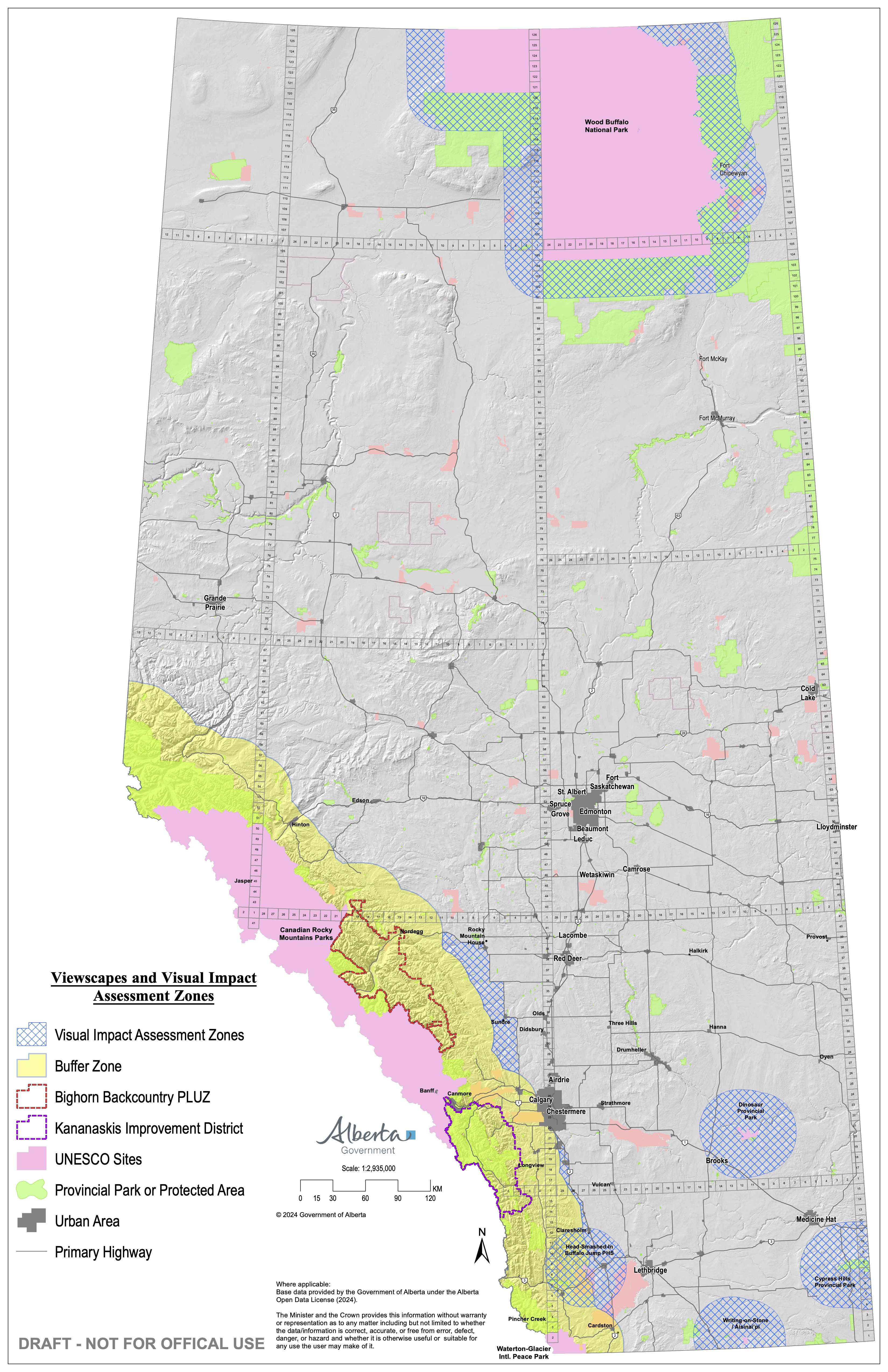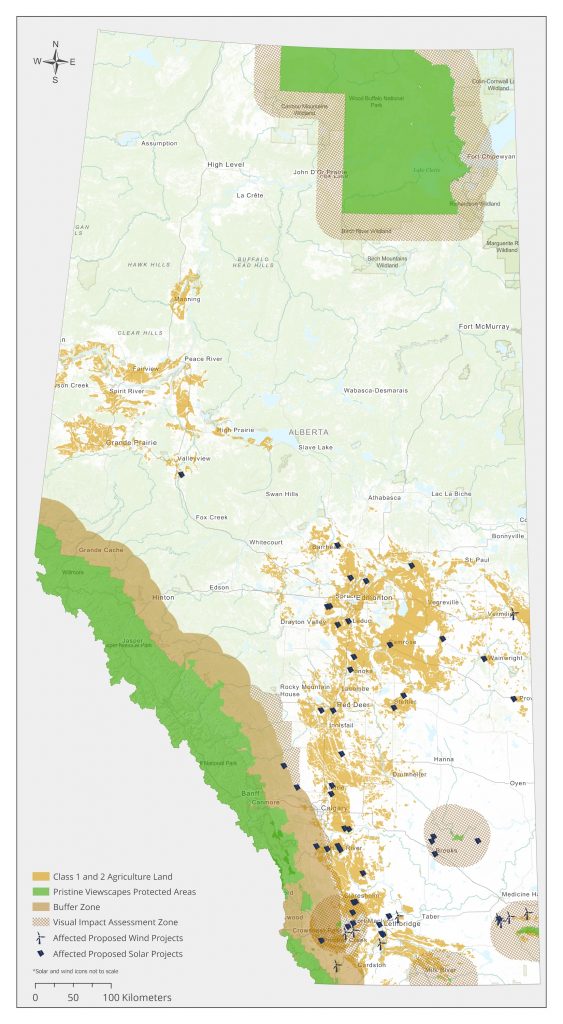By David Dodge, GreenEnergyFutures.ca
Alberta lifted its six-month moratorium on renewable energy projects, but some industry experts say new rules are so onerous they create a defacto continued moratorium.
This is ironic since Alberta’s renewable energy industry was booming, leading the nation in investment and projects with billions of dollars worth of projects ready to go.
After analyzing Alberta’s new map of no-go zones the Pembina Institute found as many as 57 renewable energy projects representing $14 billion in investment may be at risk, says Jason Wang of Pembina.
In our original story on the new rules, we talked to Dr. Sara Hastings-Simon, a renewable energy expert at the University of Calgary. It seemed Alberta was essentially closing for business regarding renewables.
The government announced no-go zones 35 kilometres from protected areas and “pristine viewscapes” which interpreted literally would have blocked off 76% of southern Alberta from renewable energy projects, the location of the best solar and wind resources in Canada.
Additionally, Alberta indicated no development could occur on classes one and two agricultural lands. This is odd and highly discriminatory since Alberta is still pushing for coal mining in the Rocky Mountains and oil and gas operations occur in every view scape imaginable in Alberta including some protected areas.
Also perplexing is the boom in renewable energy was one of the only significant actions to combat climate change in Alberta, a province ravaged by wildfires, floods and droughts. Some rivers are running dry and towns are scrambling to find water in southern Alberta which is setting up to be a major crisis.
Dust in the wind
The Alberta government has offered some clarifications on their proposed rules so we got in touch with Vittoria Bellissimo, the president of the Canadian Renewable Energy Association to break it all down.
“For context, last August, Alberta decided to pause Alberta Utilities Commission approvals of renewable energy projects that was supposed to come off at the end of February and it did on time as promised, but there are new obligations that renewable energy generators must meet,” says Bellissimo.
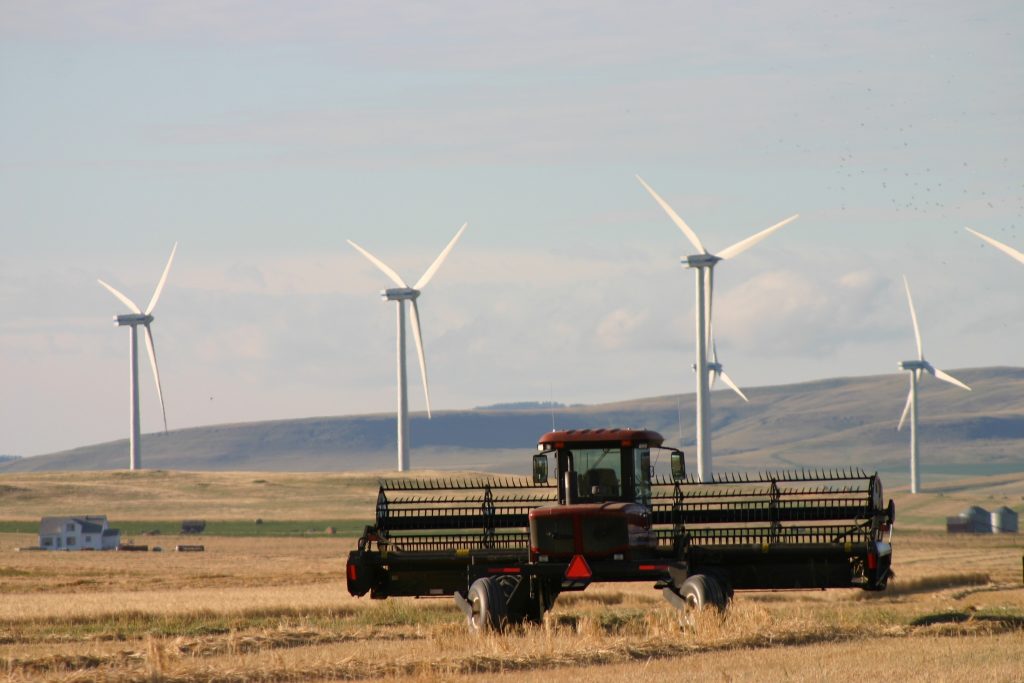
Agricultural Lands
Restrictions on classes one and two agricultural lands do come with a caveat it turns out.
“Alberta is taking what they have referred to as an agriculture-1st approach. So, on class one and class two lands, as long as renewable energy developers can show that they will be able to coexist with agriculture, then those projects will be allowed to proceed,” says Bellissimo.
Like many of the proposed new rules understanding what this means is a bit of a shell game and open to interpretation which creates enormous uncertainty for the industry.
Pembina found as many as 35 renewable energy projects in the pipeline could be caught up in these new restrictions. But the government’s own Alberta Utilities Commission and CanREA both suggest it’s much ado about nothing.
“Let’s break it down. So, for wind, 95 per cent of the footprint of a wind project can still be used for agriculture. You can plant crops right up to the base of the wind tower foundation and animals can graze right up to the base of the wind tower foundation,” says Bellissimo.
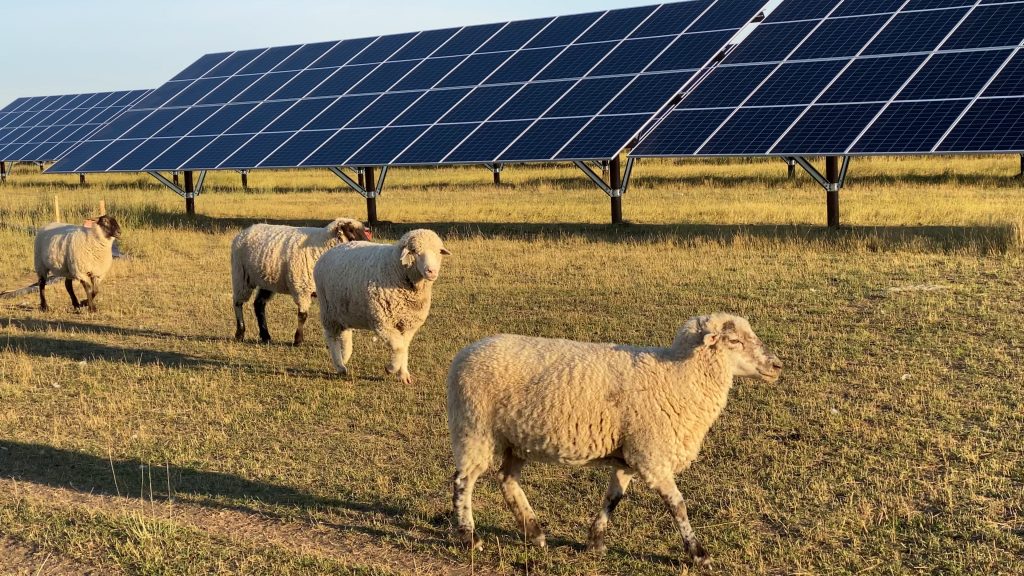
Wind power already works with agriculture
“It really is a solution that always works with agriculture.” Taking away this option limits the farmer’s and landowner’s choices and ability to draw revenue from their land.
“For solar, there are lots of options. You can plant different types of crops. Pollinators can exist, bees can exist, and sheep can graze,” says Bellissimo.
As it turns out no solar has been located on class one agricultural lands and only 15 per cent is on class two lands. Solar producers could probably do better, but there are already some pretty good examples of solar working with agriculture such as the Claresholm 132-megawatt solar project that actually works better for sheep grazing than it did before.
The Alberta Utilities Commission was asked to prepare a report on the impacts of renewable energy on agricultural and environmental lands, to consider “pristine viewscapes” and to look at mandatory reclamation and security of projects. Their report was released Jan. 31, 2024.
Long story short the report found no big problem with regards to agricultural land. And one of the big bullet points reads like this:
“Based on the AESO high renewable net-zero scenario, and assuming all renewable development locates on class 2 land, the percentage of agricultural class 2 land loss is estimated to be less than one per cent by 2041.”
A slew of new rules and restrictions will introduce red tape, limit the choices of farmers and landowners and harm investment.
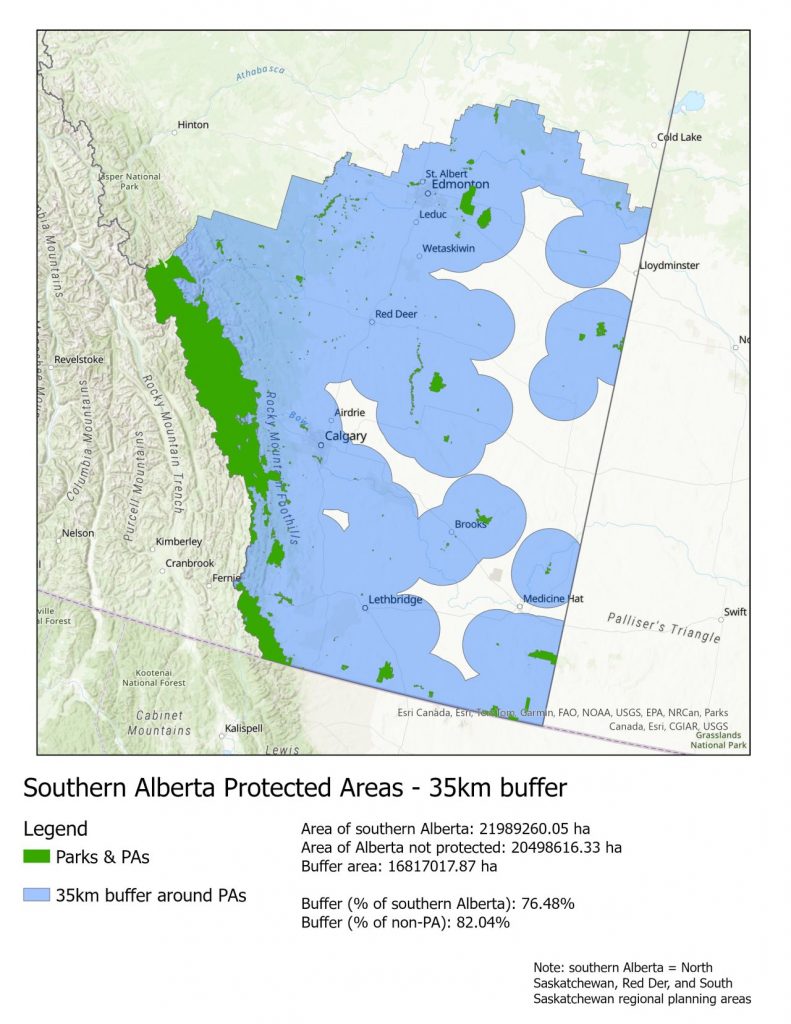
Protected Areas and “Pristine Viewscapes”
The idea of restricting industrial development around protected areas and pristine viewscapes sounds like a great idea, one that should make environmentalists gleeful.
But perhaps ironically it was the Canadian Parks and Wilderness Society that attempted to create a map of no-go zones for renewable energy based on the government’s language at the time of the announcement of the new rules.
CPAWS cares about wild places, but they also seem to care about action on climate change which is threatening nature with species extinctions, unprecedented wildfires and all sorts of harms.
“The map that was circulated showing 76 per cent of Southern Alberta being off-limits wasn’t a government-sanctioned map. It was an interpretation of what was released,” says Bellissimo.
“The government took a little bit longer than industry would have liked to release a map, but they’ve done so. And it does show the buffer zone is limited to what the minister described to us, which was the Rocky Mountains and the foothills along with visual impact assessment zones around UNESCO World Heritage sites,” says Bellissimo.
No-go zones could affect 57 renewable energy projects worth $14 billion
Bellissimo is quite polite in her assessment since industry and her association still want to work with the government to get renewable energy back on track in Alberta.
But the new “government” map shows exclusion zones that total about 30% of Alberta including the foothills around Pincher Creek where many wind power projects have been built and where possibly the best winds in Alberta are.
Overlaying current renewable energy projects on the map the Pembina Institute found 57 projects worth $14 billion in investment could be caught up in the restrictions.
The buffer zone now appears to extend out past Hinton, almost to Calgary and right up to Claresholm in the south.
This approach, if applied to oil and gas would have eliminated massive portions of the industry in Alberta.
The AUC did acknowledge that there is no definition of pristine viewscapes, and that’s quite problematic, but as Bellissimo says the AUC suggested the rules should be “industry neutral.” Which it is not.
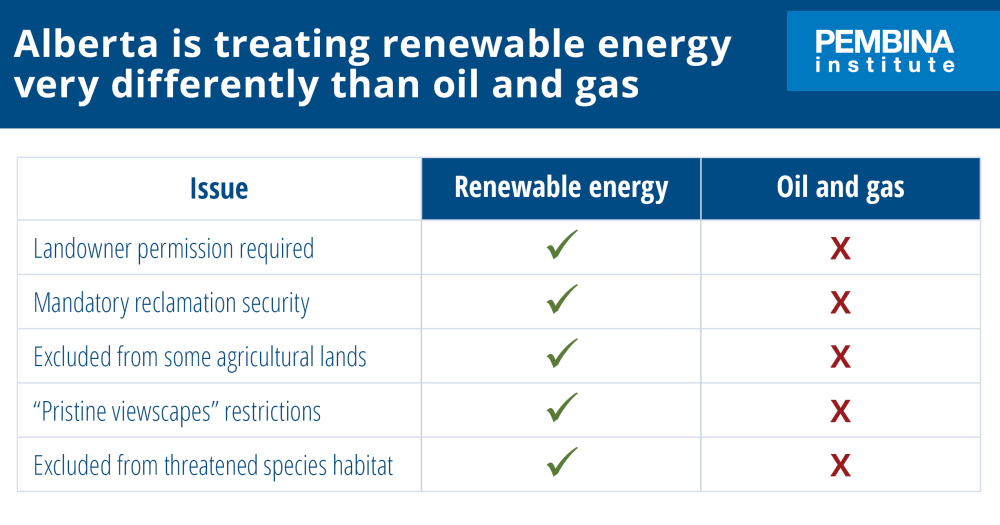
Security and Reclamation
“On reclamation, we at CanREA know that our members are doing this work and, I think we got close to what we asked for,” says Bellissimo.
“There is a little bit of uncertainty still with regard to what the AUC will measure reclamation against, but if a developer has a contract in place with the landowner and as long as it meets a certain threshold, which we do not know yet, it will be respected.”
Bellissimo says for the most part this is good news and in alignment with what the industry is doing already.
The AUC also seemed to agree there is no big problem here.
“Existing power plant reclamation requirements are sufficiently defined to ensure effective reclamation, but no timing trigger exists to initiate reclamation,” says the report.
And besides the renewable energy resource will still be there when the solar modules wear out. The AUC concluded: “The reclamation risk profile for renewable power plants is relatively lower than other industries’ reclamation risks as there is no fuel depletion risk and a lower contamination risk.”
In other words, the best reclamation strategy for a solar farm is to install new more efficient modules when the old ones wear out and continue making revenue.
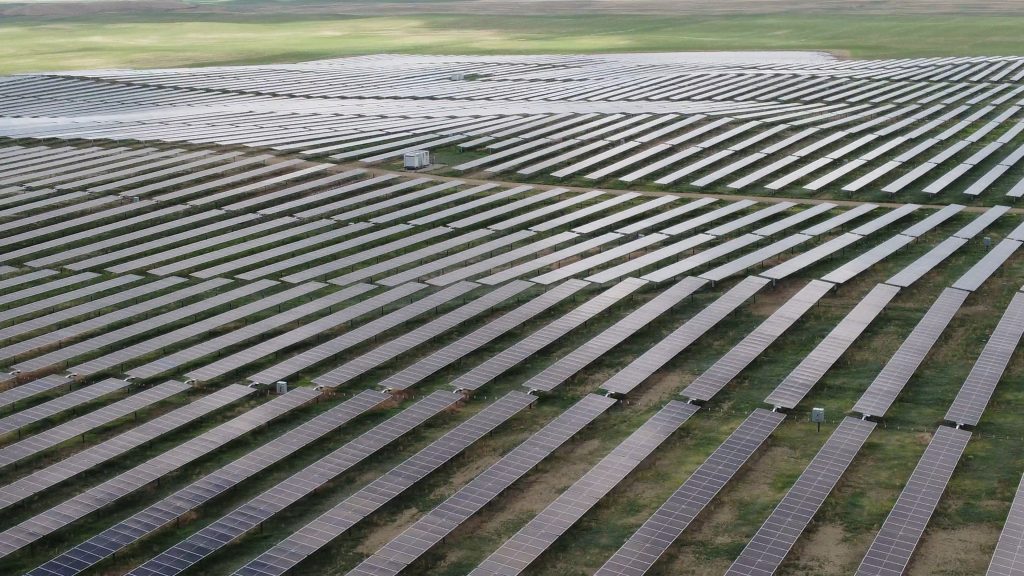
Energy Market Review – more uncertainty to come
On top of all of those changes, the Alberta government has also asked the Alberta Electric System Operator (AESO) to look at restructuring Alberta’s energy market model by fall 2024.
This could be a good thing for renewable energy and reforms are desperately needed for the evolution of Alberta’s electricity grid, but the devil is in the details.
“There’s a rationale for making some changes to the market. But enormous changes will have enormous consequences,” says Bellissimo.
She wonders if changes will be made that can help the grid modernize and evolve or toss even larger monkey wrenches into the market.
“There are over 3,300 megawatts of corporate renewable PPAs in Alberta. And that’s when a buyer has signed on to buy the output of a renewable facility,” says Bellissimo.
Those purchases were made under the existing market structure and anything that changes the nature of those contracts could be quite problematic, even disastrous.
What the industry is looking for are changes that fairly compensate new technologies such as energy storage for the services they provide to the grid.
What’s needed is a structure that works for “future renewable energy and energy storage accompanied by a tariff that works for energy storage.”
“As a country, if we’re looking to electrify and we’re looking to bring costs down for consumers in the long term,” says Bellissimo.
Consider energy storage for example.
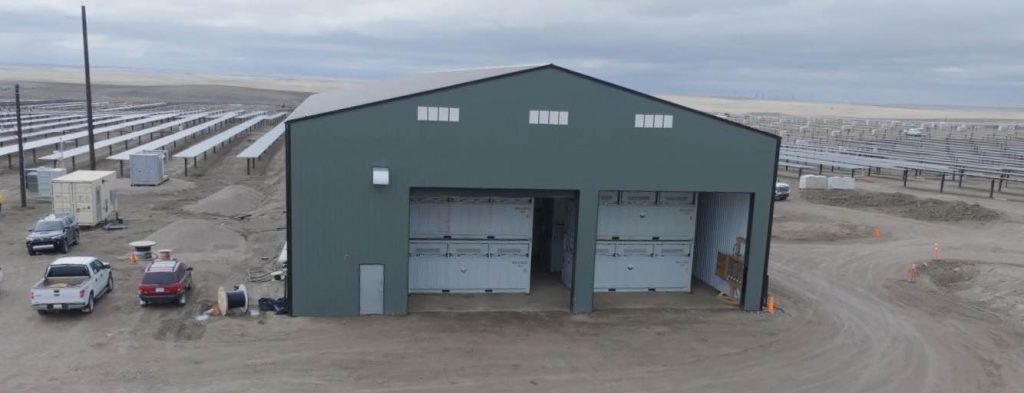
Add energy storage, save $600 million
CanREA and Energy Storage Canada commissioned a study, given the high prices in Alberta’s electricity market in 2022, to find out what difference energy storage could make.
“If we [added] 300 megawatts of, 1,200 megawatt hours of energy storage in the Alberta electricity market. We saw that prices would drop considerably. And in fact, customers in Alberta in 2022, with that additional energy storage on the market would have saved $600 million,” she says.
Bellissimo says changes to the market structure would encourage investment in energy storage and other smart grid technologies that will make electricity cheaper and smooth out the variability of renewable energy.
“It looks like energy storage in the energy market is a real win for customers and we need to drop the tariff,” Bellissimo says.
“Our members are in Alberta building energy storage for a whole bunch of things including frequency response and ancillary services and with the passage of Bill 22 now, utilities can use energy storage to reduce wires costs for customers. So it’s a real good news story and there’s a lot of excitement on the energy storage front,” she says.
But more changes are needed.
Given the growth of electric vehicles, consumers electrifying heating and other new demands it’s essential to enable smart grid and home technologies to help make a more reliable and affordable grid.
I do agree that the demand side of the market is going to play a much larger role. But you have to think about it that way, David. The price signal needs to pass all the way through to that end user in order for them to benefit,” says Bellissimo.
Renewable energy is cheaper, even with integration costs, she says. But the present focus doesn’t appear to be on maximizing cheaper energy, reducing emissions or affordability.

